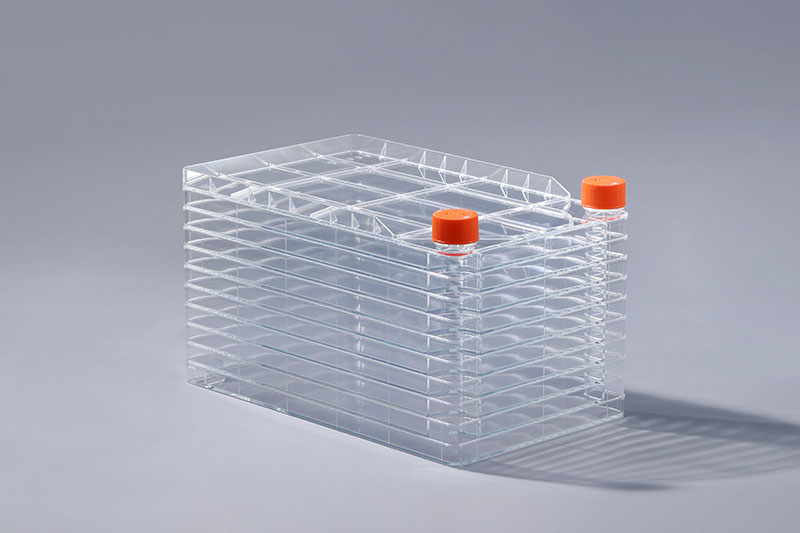With the continuous improvement and perfection of various processing techniques, cell culture consumables of various polymer materials are playing an increasingly important role in the field of life science research. A cell factory is a consumable made of polymer materials. According to its specifications, the application scenarios are also different.
The cell factory is made of polystyrene (PS) raw materials. At present, the specifications on the market include 1 layer, 2 layers, 5 layers, 10 layers, and 40 layers. The products below 10 layers are mainly used for small laboratory cells. It is often used to replace cell culture flasks, which can save space, reduce pollution, and facilitate operation.
Cell factories with more than 10 layers are generally used for large-scale cell culture, such as biopharmaceuticals, vaccine production and other fields, especially the industrial production of vaccines. Currently known vaccines that can be produced with this consumable include Japanese encephalitis vaccine, rubella vaccine, measles vaccine, mumps vaccine, chickenpox vaccine, hepatitis A vaccine, rabies vaccine, polio vaccine, rota vaccine, etc. It is worth noting that since the 10-layer and 40-layer consumables are heavy and difficult to operate manually, auxiliary tools such as manipulators, shakers, incubators, supports and carts are used to ensure the convenience of production. sex and safety.
The above are the application scenarios corresponding to different specifications of the cell factory. No matter which aspect is applied, the required temperature, osmotic pressure, carbon dioxide, pH value and sterility requirements for cell culture are unchanged, which are also the basic conditions for cell growth.
The FAI climbed 5.9 percent year-on-year in the first 11 months of 2018, quickening from the 5.7-percent growth in Jan-Oct, the National Bureau of Statistics (NBS) said Friday in an online statement.
The key indicator of investment, dubbed a major growth driver, hit the bottom in August and has since started to rebound steadily.
In the face of emerging economic challenges home and abroad, China has stepped up efforts to stabilize investment, in particular rolling out measures to motivate private investors and channel funds into infrastructure.
Friday's data showed private investment, accounting for more than 60 percent of the total FAI, expanded by a brisk 8.7 percent.
NBS spokesperson Mao Shengyong said funds into weak economic links registered rapid increases as investment in environmental protection and agriculture jumped 42 percent and 12.5 percent respectively, much faster than the average.
In breakdown, investment in high-tech and equipment manufacturing remained vigorous with 16.1-percent and 11.6-percent increases respectively in the first 11 months. Infrastructure investment gained 3.7 percent, staying flat. Investment in property development rose 9.7 percent, also unchanged.
 English
English



















































